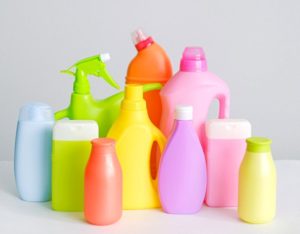
Toxic chemicals in plastic may be toxic to humans
A recent New York University study shows that older adults with high levels of the chemical phthalates in their urine may have a higher risk of early death from heart disease. The study, led by the university’s Grossman School of Medicine, examined increased exposure to the chemical used in plastic products and cosmetics and its link to cardiovascular disease. The study was designed to investigate the economic burden the use of these toxic chemicals in plastic cause in this country.
The study’s lead author, Leonardo Trasande, M.D., MPP cautions, “Our research suggests that the toll of this chemical on society is much greater than we first thought.”

Phthalates can be found in many household products and containers
Although the most dangerous varieties of phthalates are banned in most countries, including the United States, some types are still used in thousands of products in the U.S. Many personal care products including cosmetics, deodorants, shampoo, lotions, and body wash contain them. Household cleaners and detergents often contain them, as well. Phthalates are also added to hard plastics to make them more pliable. Products like food containers, medical tubing, building materials and vinyl flooring are just a few more examples of consumer commodities containing some level of these toxic chemicals.
Phthalate Levels Increase with Continued Exposure
Most researchers have discovered measurable levels of the substance in the general population. We absorb phthalates into our bodies over time through continued exposure. This includes eating or drinking things packaged inside the plastics containing it, particularly when microwaving. We absorb this toxic chemical into our skin through the use of personal care products that contain it.

Many cosmetics contain phthalates under the guise of “fragrance” on the label
Cosmetic companies must list phthalates as an ingredient. However, the use of the word “fragrance” can very well indicate that these toxic chemicals are present in your product even if it is not noted on the label otherwise. WebMD states that we can also absorb phthalates through contact with dust in rooms where “carpet, upholstery, wall coverings, or wood finishes” have this type of chemical in them.
Phthalates are hormone disruptors. This is particularly concerning for children and adolescents. Some studies have shown that they affect the reproductive system in animals. Other research indicates that exposure may increase the likelihood of conditions like diabetes. This synthetic substance may increase our collective risk for every major morbidity except cancer. But The Centers for Disease Control feels more research is needed to better understand whether our low-level exposure poses any true major health risks.
Ways to Decrease Phthalate Exposure
In the meantime, we can make efforts to reduce the likelihood of its influence on our health. Much like the reduction of fatty foods can decrease our risk of heart disease, we can minimize our use of products or packaging containing any derivative of this plastic.

There are many alternatives to plastics available to consumers.
We can take specific measures to decrease our daily exposure to this element in our environment. Seek out companies that advertise “phthalate-free” or “fragrance-free” on their labels. Only use microwave-safe plastics when heating food. Select glass, paper, or metal products or packaging versus plastic, particularly for foods. And choose non-synthetic household products and cleaners of every type whenever possible.
It is impossible to completely eliminate plastics from our lives. But in reducing consumption, we might not only extend our own lives but that of our planet as well.
The Food and Drug Administration does not regulate cosmetics or personal care products, but it offers a list of companies that use phthalates in certain products.
Additionally, the U.S National Institute of Environmental Health Sciences offers a PDF to learn more about the potentials for exposure, and how to avoid it: “Phthalates: The Everywhere Chemical”

 Phthalates in Plastic May Cause Premature Death
Phthalates in Plastic May Cause Premature Death


 How Dare You Die Now!
How Dare You Die Now!
 Debating Medical Aid in Dying
Debating Medical Aid in Dying
 “Help Me, Helen”
“Help Me, Helen”














